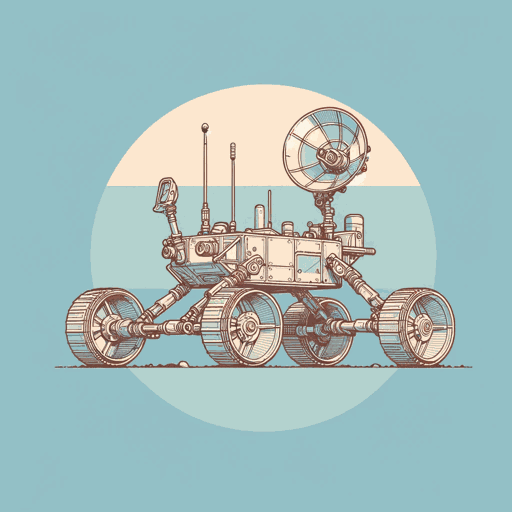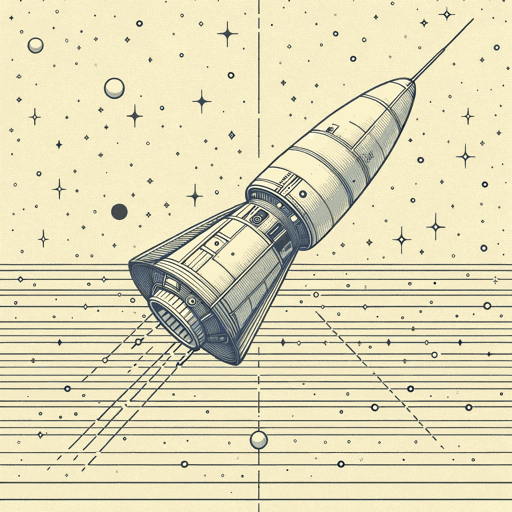83 pages • 2 hours read
Andy WeirThe Martian
Fiction | Novel | Adult | Published in 2011A modern alternative to SparkNotes and CliffsNotes, SuperSummary offers high-quality Study Guides with detailed chapter summaries and analysis of major themes, characters, and more. For select classroom titles, we also provide Teaching Guides with discussion and quiz questions to prompt student engagement.
Summary and Study Guide
Overview
Andy Weir’s debut novel, The Martian, was originally published in 2011 as serialized blog posts; after its 2014 book publication, it was a New York Times bestseller. A software engineer and son of a physicist and an electrical engineer, Weir identifies himself in the book jacket biography as a “lifelong space nerd,” and the novel is notable for staying strictly within the bounds of existing scientific understanding. Set just over two decades beyond the novel’s first publication, the story presents a near-future realistic world, and its foundations in contemporary natural sciences places it in the category of “hard” science fiction. The book won Weir the Seiun Award for the Japanese translation, as well as the John W. Campbell Award for Best New Writer in 2016. Ridley Scott’s film adaptation starring Matt Damon as protagonist Mark Watney was released in 2015.
This study guide refers to the 2014 Broadway Books paperback edition.
The Martian is set in 2035 and follows Mark Watney, an American astronaut who becomes stranded on Mars. Watney is a member of the Ares 3 crew, the third mission to Mars. The first two missions went well, but Watney’s team was forced to abandon their mission within days. The novel opens with Watney’s mission log after he is stranded, and he explains what went wrong: A dust storm threatened to tip the Ares 3 Mars Ascent Vehicle (MAV) and strand the entire crew on Mars; a defunct MAV would render impossible any return to their ship and eventually to Earth. Melissa Lewis, the crew commander, made the difficult decision to abort the mission and return to their ship, the Hermes, before the storm could sabotage them—but as the crew traversed the storm, Watney was hit by flying wreckage and disappeared into the storm. The rest of the crew waited at the MAV as Commander Lewis searched the area for Watney. Eventually, the winds were too high and the crew’s lives were at risk, so she returned, and they launched back to the Hermes. Because Watney’s biomonitor readings showed no signs of life, they concluded he was dead and began their return trip to Earth.
Unbeknownst to them, Watney is alive and in fairly good condition. He was impaled by the communications dish antenna, which also destroyed his biomonitor. However, the blood from his wound sealed the rupture in his suit, saving his life. Awaking hours later after the storm has passed, he makes his way to the safety of the Mars Lander Habitat (Hab), where the crew has been living during their mission. He is able to patch himself up, but because the antenna ripped away from the communications dish, he has lost all communications with NASA. He now realizes that he is stranded on Mars and that the Ares 3 crew, and therefore NASA, believe him dead.
Watney tends to his two most immediate problems: extending his food supply until the next Mars mission arrives, and opening communications to NASA to signal he is alive. Putting his botanist skills to use, Watney starts a farm using raw potatoes that were included for the crew’s Thanksgiving meal, calculating this will sustain him until rescue. With the small amount of Earth soil that he brought on the mission, he “seeds” the Martian soil, introducing the bacteria necessary for plant growth. For fertilizer, he uses his own human “manure” as well as that which was left, vacuum-sealed, by the rest of the crew.
Contacting NASA is more difficult. Watney modifies one of the two rovers at the mission site so he can travel long distances; after several short test drives, he ventures out on a longer, three-week trip to retrieve Pathfinder, an old, abandoned Mars probe, and its robotic rover, Sojourner. With Pathfinder, Watney plans to contact NASA.
Meanwhile back on Earth, NASA has realized Watney is alive. Satellite imagery shows movement that could only be human. Unbeknownst to Watney, NASA has been tracking his whole excursion to Pathfinder—and when he gets the Pathfinder communications up and running, they are ready to receive. Realizing he is no longer alone, Watney works with NASA on a rescue plan. NASA also informs the Ares 3 crew, still aboard the Hermes en route back to Earth, that Watney is alive on Mars.
Planning for the Ares 4 mission to retrieve Watney when they arrive on Mars, NASA strategizes keeping him alive until that time. While Watney is relieved and appreciative, he struggles with the pace of bureaucratic problem solving. Things seem to be going well, but as he prepares for his second potato harvest, a tiny flaw in the airlock fabric causes the canvas to tear away from the Hab. The Hab deflates, and everything inside freezes, killing the soil. Watney fixes the Hab and harvests his potatoes, but another crop would be impossible. Once again, starvation seems inevitable long before the Ares 4 crew can save him.
NASA quickly recalibrates and decides to send an Ares 4 supply probe early with food for Watney. To complete the probe in time for launch, they forgo inspections, and, upon launch, the probe is destroyed; however, the China National Space Administration offers one of their probes, and NASA begins modifying it for its new mission. Meanwhile, NASA physicist Rich Purnell devises a plan whereby the Hermes can return to Mars for Watney. NASA decides against it, but the Hermes crew forces their hand when they go off course and initiate what they call the “Rich Purnell maneuver.” The Chinese probe is quickly modified to dock with the Hermes as it passes Earth, resupplying the crew for their return trip. The Ares 3 crew then sets off to rescue Watney.
When preparing for the Mars missions, NASA sends equipment ahead of the crew so that it is waiting when they arrive; the Ares 4 MAV has therefore already landed on Mars. The Hermes is not equipped to land directly on Mars, so Watney will have to travel to the Ares 4 MAV and modify it so he can launch into orbit, intercept the Hermes, and bring it to Mars. However, the trek to the Ares 4 MAV is a 3,200-kilometer journey, which will take approximately 50 Mars days. While modifying his rover to travel that distance, Watney accidentally sends a power surge through the Pathfinder and loses communication with NASA. Although he already has most the information needed for the journey, he is on his own again—and he will not even know if the Hermes resupply probe was successful, or if the Hermes is able to make the return trip, until he reaches the Ares 4 MAV and recontacts NASA.
With his modified rover, Watney journeys toward the Ares 4 MAV. However, NASA cannot warn him of the imminent dust storm that will hinder recharging his rover’s solar cells. Luckily, Watney realizes early on what is happening, and he detours around the storm. He loses time but is still on schedule and eventually arrives at the Ares 4 MAV with time to make the necessary modifications for launch. On the day of launch, Watney successfully gets the MAV into orbit, but the Hermes crew must make some drastic decisions in order to intercept him, including setting off a bomb in the ship to decrease their distance from the MAV. Beck, an Ares 3 crew member, performs an Extravehicular Action (EVA), pulls Watney from the MAV, and brings him safely into the Hermes. They report their success to NASA and to the entire world tuned in to the mission. Reunited, the Ares 3 crew begin their journey home.
Related Titles
By Andy Weir



